Taittinger Comtes De Champagne Blanc Des Blancs 2008: James Bond Will Like It
by Ken Gargett
It would be more than understandable if you are thinking, “Not another 2008 champagne!” A quick look through the records shows this to be the sixth from that vintage that I have highlighted here; I assure you they are all more than worthy of the attention given them. This is a spectacular vintage.
I have also focused on 2012, having looked at five of the champagnes from that vintage so far. The 2008 and 2012 are very different vintages, but both are wonderful, the best of this century (2002 would be a worthy runner-up, and 2018, when it hits the shelves, may just challenge it).
The 2012 vintage was a great Pinot Noir year and the wines are rich and full-flavored. Probably the years it most resembles are 1996 and 1990. The 2008 is more of a Chardonnay vintage, classical and elegant, more subtle and restrained. As I have mentioned previously, it reminds me of the astonishing 1988 vintage. Good examples from both years will cellar for several decades in good conditions.
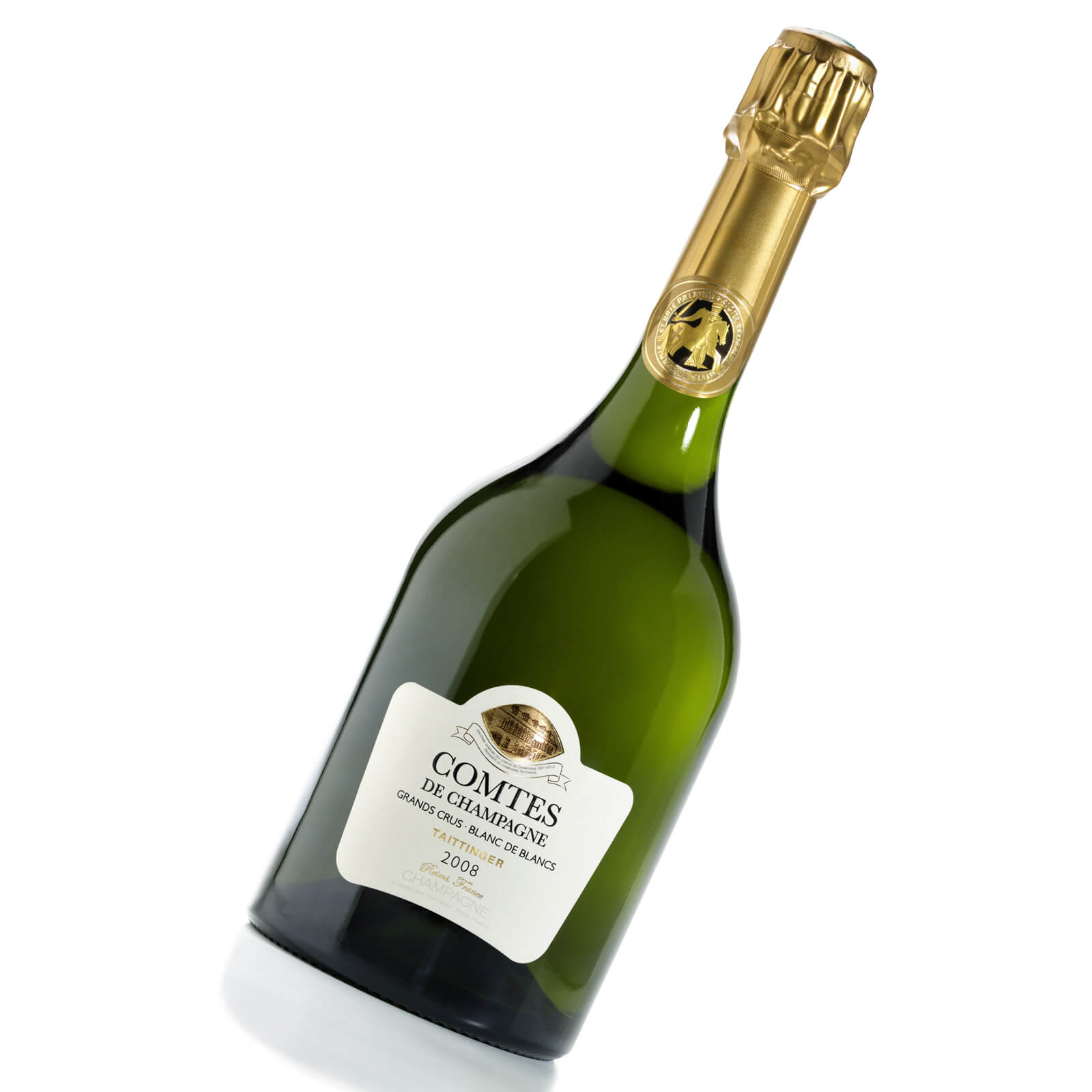
Taittinger Comtes de Champagne Blanc des Blancs 2008
Some vintage reminiscence
The 1988 vintage is an interesting one, if I may reminisce. The Champenois were desperate for a good vintage as the last excellent year was 1985, but that was an extremely small crop. Nineteen eighty-six was a reasonable year but, as my father would have said, there were not that many wines to write home about. I remember the 1986 Pol Roger Blanc de Chardonnay (now referred to as a Blanc des Blancs) as the best I tasted from that year. I can’t think of any champagnes released from 1987, though I’m sure there must have been a few – certainly nothing of note.
So when 1988 came along, it was embraced, although at the time, much more in hope than expectation. It was good enough to be released as a vintage, which was desperately needed, and to provide reserve wines for the future. But there were only a very few convinced of its greatness (and I most certainly was not one of them). The generous and friendly 1989s were considered superior, and 1990 was seen as head and shoulders above them both.
My first visit to the Champagne region was in 1993 and I spoke with numerous houses about vintages. It was universally acknowledged at the time that 1990 was the best by far; 1989 was very good; and 1988 brought up the rear.
I was back a year or two later and there was some rethinking happening: 1990 was still the star, but for many 1988 had come through on the rails and was pipping 1989.
Back again a couple of years after that and things had definitely changed. While not many were putting 1988 first (some were), most conceded it to be at least the equal in quality of 1990. Poor old 1989 was lagging well behind. The reason, I believe, was simply that 1988 was a very restrained, pristine, elegant vintage, one of purity and laser-focused acidity that hid its glories for some time.
Nineteen eighty-eight is the ultimate example of a vintage sneaking in under the radar. That is far less likely to happen these days as everything is under so much scrutiny. Back then, you really had to wait till the wines were released, but now every aspect of the weather, techniques in the winery, blending, and more are all under the microscope.
Which would explain why 2008 was getting people excited even before they’d finished harvesting the grapes. According to the team at Taittinger, 2008 was “warm yet fresh – the perfect expression of our continental climate in Champagne.” It was especially exciting for Blanc des Blancs styles.
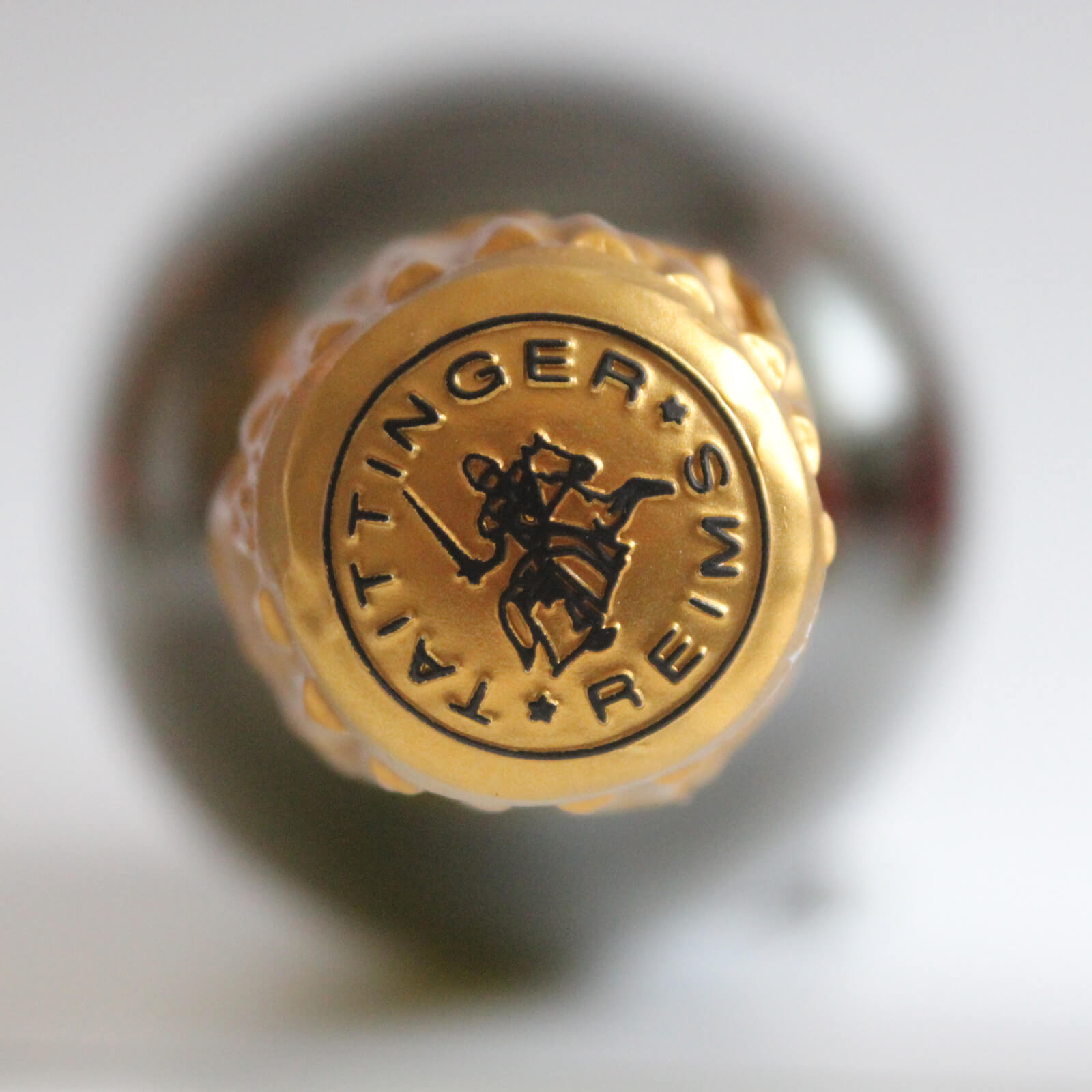
Taittinger Comtes de Champagne Blanc des Blancs 2008
If the world is a balance of swings and roundabouts, then the devastation of the financial markets throughout 2008 was more than offset by the glories that were to come from the vineyards in Champagne. Although it is much more likely that the two are in no way linked.
Why review the Taittinger Comtes de Champagne Blanc des Blancs 2008?
You may be asking yourself why bother reviewing yet another 2008 – we’ve got the picture.
For starters, it is a great year. Next, the Taittinger Comtes de Champagne just might be the best of them all. A decision such as that will come down to personal preferences, of course, but this champagne has a litany of high scores – most range from 98 to 100 – and praise from critics.
It was also named the best champagne of 2021 by the highly regarded Fine Champagne magazine. I know the team behind the magazine very well and I know how seriously it takes its champers. It is not the first time that Taittinger’s Comtes has won this award, either; the Taittinger 2000 won in 2012. Other winners over the years have included the Rare 2002, Cristal Rosé 2002, Laurent-Perrier Grand Siècle No. 22, Moët & Chandon MCIII 1.14, and Dom Pérignon Rosé 2006. Good company.
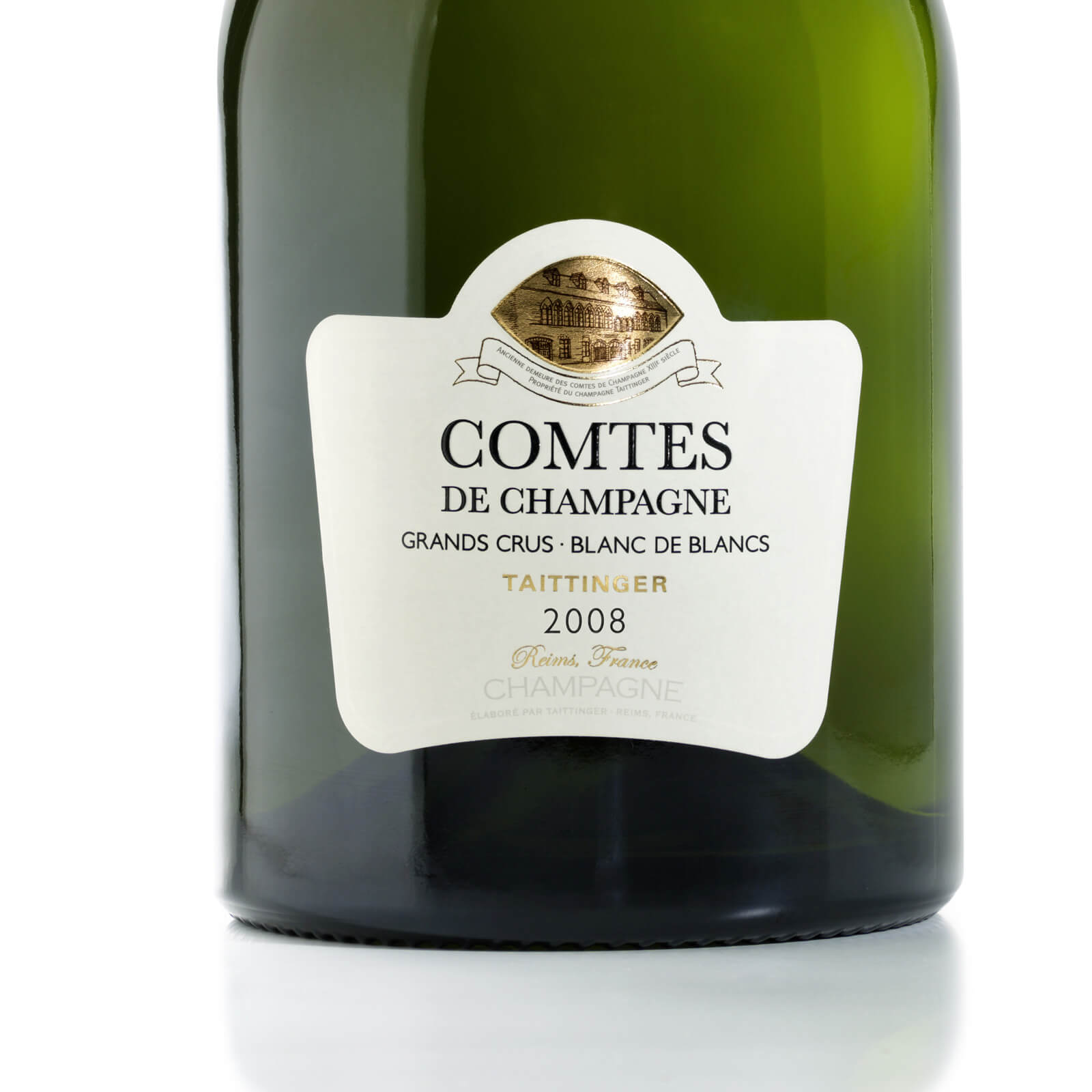
Taittinger Comtes de Champagne Blanc des Blancs 2008
Comtes de Champagne is the flagship of the house of Taittinger and was one of the earlier flagships ever released. The first vintage was 1952 (use of the name was authorized by Count Guillaume, the last descendant of the Comtes de Champagne) and there have only been 36 vintages since then.
The name came from the stories of the counts of Champagne from centuries past. In particular, Thibaud IV, King of Navarre and a man who “embodied the height of the political, economic and artistic influence of Champagne from 1222 to 1253.” He was alleged to have returned from the Crusades with two treasures: the Damask rose (gardeners among us might be aware that it was apparently grafted on to the Gallica rose, common throughout Europe, and apparently all roses now grown in Europe come from this crossing) and a new grape, the ancestor of the Chardonnay.
The residence of Thibaud IV has belonged to the Taittinger family since 1932, who has undertaken considerable renovations.
Comtes de Champagne is, of course, a Blanc des Blancs (100 percent Chardonnay) and there is no better site in Champagne for Chardonnay than the legendary Côte des Blancs. Ninety-five percent of its vineyards are planted to this grape. The soils are dominated by chalk and the vineyards predominantly face east, giving them optimal sunshine.
Only grapes from five Grand Crus in the Côte des Blancs are ever used to make Comtes: Cramant, Avize, Chouilly, Oger, and Mesnil-sur-Oger, although apparently in certain vintages Taittinger does like to include a small proportion from the Premier Cru Pierry, though this did not happen in 2008.
Only first pressing juice is used, and the wine does undergo malolactic fermentation. Production is estimated at between 100,000 and 300,000 bottles per year, depending on the vintage, although in 1995 Taittinger managed 500,000 bottles.
Around five percent of the blend spends time in oak, just four months. One-third of the barrels are refreshed every year from the Seguin Moreau cooperages. I remember my first visit to Taittinger many years ago when I spotted the new barrels. I thought I was onto a scoop of Woodward/Bernstein proportions, but Taittinger has always been completely upfront about this, believing it contributes that something special to the wine.
The bottles, which can easily spend ten years on lees, do so in the famous Gallo-Roman chalk quarries under the former Saint-Nicaise Abbey in Reims, carved from the chalk in the fourth century. These chalk crayères have been listed by UNESCO as a World Heritage site.
Taittinger Comtes de Champagne Blanc des Blancs 2008: stats and history
The wine was disgorged in July 2019. Its final release was delayed due to the COVID-19 problems around the globe, but when it hit the shelves keen buyers were on to it in a flash.
Dosage is interesting. These days, it is around 9 to 10 grams/liter (9 for the 2008), but back in the 1970s it was around 17 grams/liter. The reduction, which I believe leads to better wines in general, is partly because reducing sweetness is the trend today and also as a measure caused by climate change: we are seeing warmer vintages and riper grapes, diminishing the need for high dosages.
There is also a Comtes de Champagne Rosé though it is rarely seen these days. It was a favorite of the famous dancer Rudolph Nureyev, who said, “When I drink Comtes de Champagne Rosé, I no longer dance, I fly . . . ”
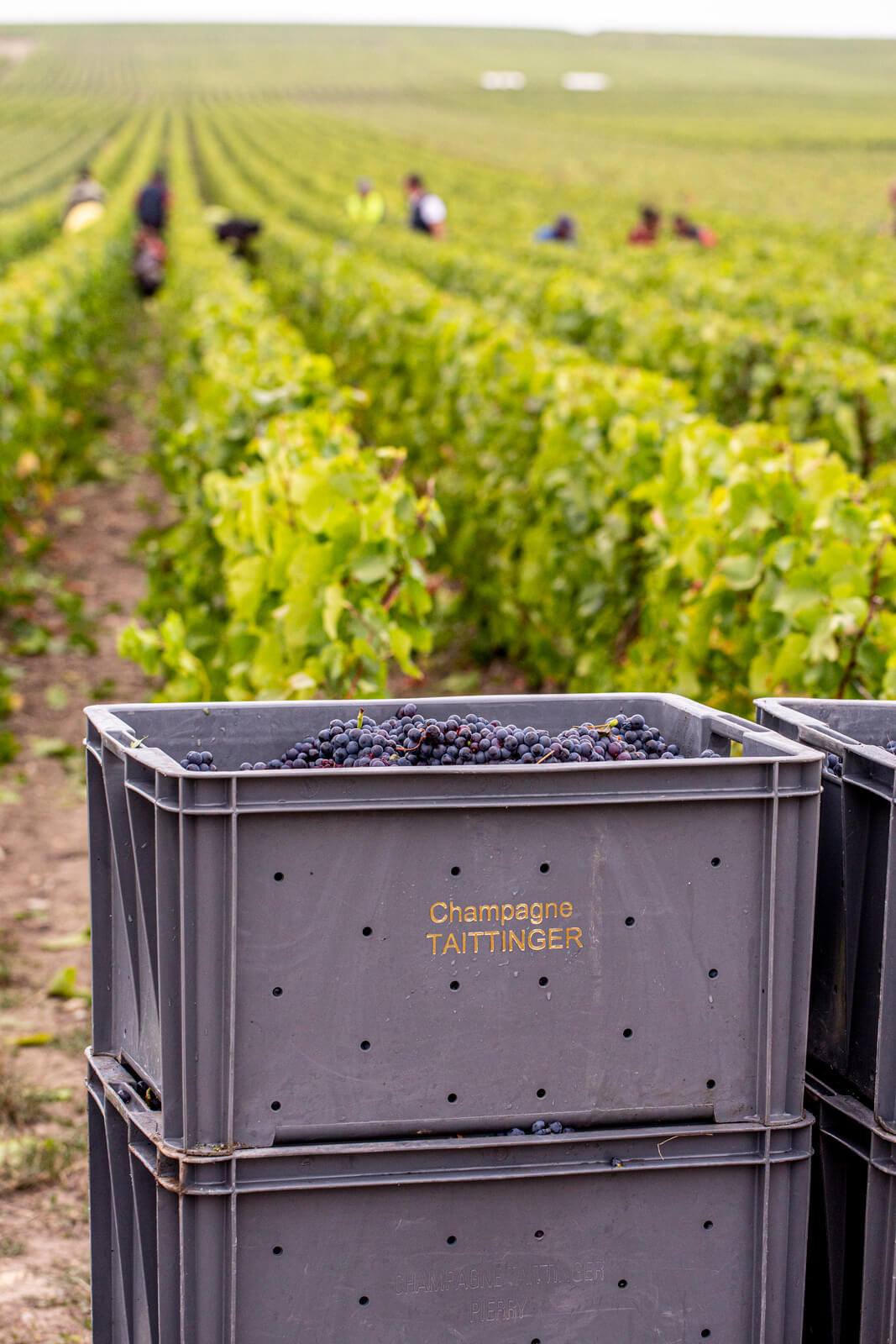
Grape picking at Taittinger vineyards in Champagne, France
Why is the Côte des Blancs and its famous chalky soils such a special site for Chardonnay in Champagne? Taittinger’s vineyard manager, Christelle Rinville, explains it well: “Chalk acts like a sponge. It captures water and holds it through capillary action which not only facilitates excellent soil drainage and provides plants with a regular supply of amino acids and mineral salts – the precursors of aromas – but also contributes minerality which is revealed at a later stage in the wines.”
The house is once more in family hands – it was sold off to the U.S. investment firm Starwood in 2005, but later repurchased in 2007 as the family realized how important the business was to it. This was all quite remarkable. The decision to sell after 60 years in the Champagne business came because, as does seem to happen in French families, the estates and business had many owners: 38 heirs (French probate legislation, if I may make a very broad generalization, sees estates divided among all heirs/children and so it only takes a few generations for there to be many owners; it is, of course, much more complex than that but you get the general gist of it).
Also included was Baccarat crystal and 14 luxury hotels, including the Crillon in Paris and the Martinez in Cannes.
The price was €2.1 billion (immediate family members have talked about how devastated they were but I would imagine that sort of money would go a long way toward easing the pain). Suggestions from some of the members that they had lost everything seem a touch exaggerated, especially when you can then turn around and raise $850 million, as you will soon see, but I guess everything is relative.
But for Pierre-Emmanuel Taittinger, at the time president of the house, and his family, there are some things more important than money. He was determined to get the champagne business back. Starwood was looking to move it on, and Pierre-Emmanuel was up against around 50 other bidders, including such giants as Pernod Ricard, LVMH, Freixenet, and Louis Roederer. Nonetheless, against the odds, he managed to raise the necessary $850 million and Taittinger was in family hands again (the purchase included the Californian operation, Domaine Carneros).
Today, Vitalie Taittinger is the president of the house, succeeding her father, Pierre-Emmanuel, on January 1, 2020. Elder brother Clovis works alongside her as managing director, looking after the global markets. This is a partnership that obviously works as the wines, always wonderful, have never been better.
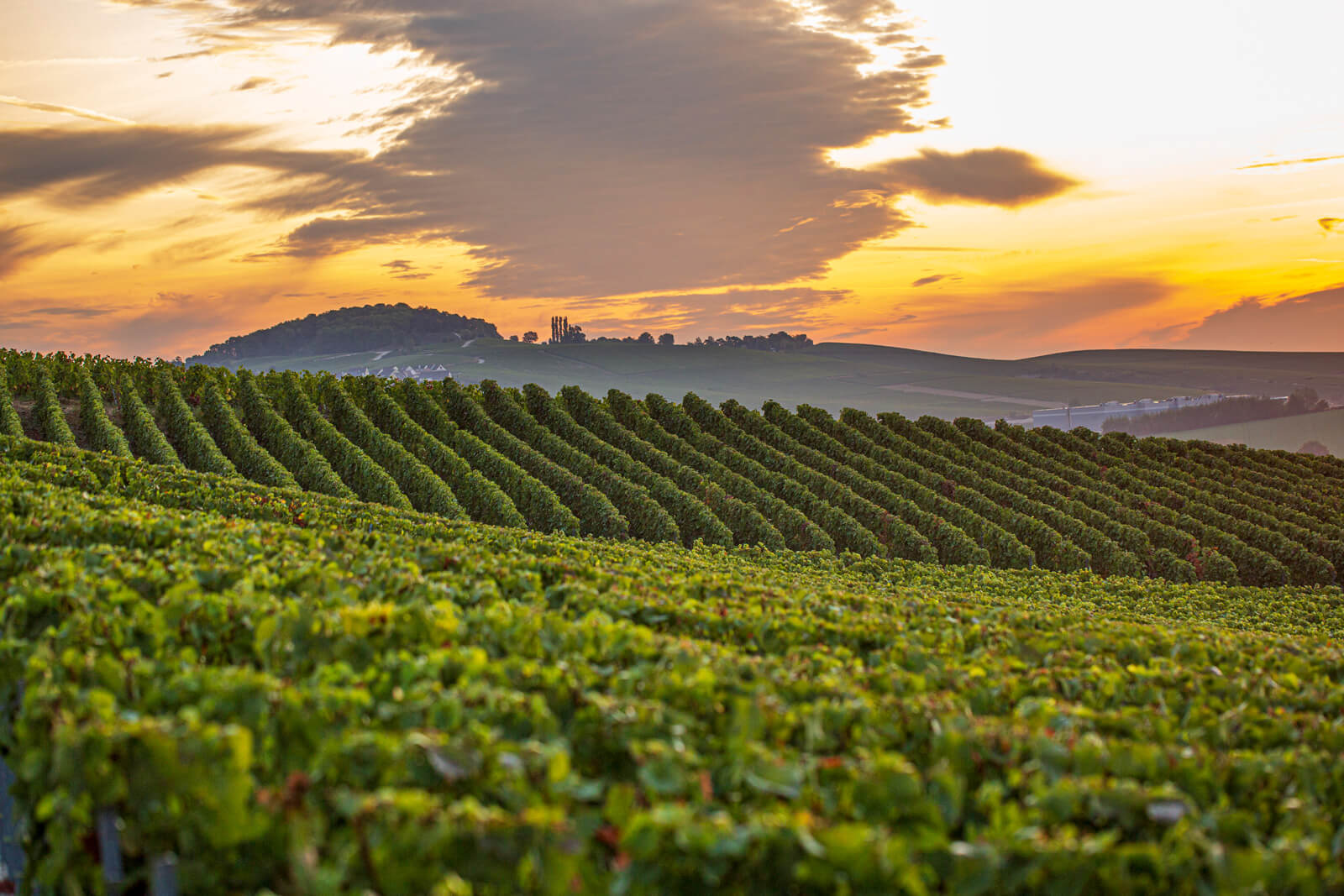
Taittinger vineyards in Champagne, France
Taittinger was originally founded by Pierre-Emmanuel’s grandfather, Pierre Taittinger, in 1932. Pierre had been quartered at Château de la Marquetterie in 1915 while in military service. He was so taken with the place that when he had the opportunity in 1932 to buy the château, he did so. And then he founded the business.
Alexandre Ponnavoy has been the chef du cave since 2018. He replaced Loïc Dupont, who had been there for 30 years. Ponnavoy, previously at Louis Roederer, has been at Taittinger since 2015.
I have mentioned the famous crayères cellars. These were carved out of the chalk by the Romans (or at least their slaves), providing them with four kilometers of tunnels under the town of Reims. Taittinger owns nearly 300 hectares of vineyards and has plots in every Grand Cru. Production is estimated at around six million bottles annually. Taittinger has an operation in California (Domaine Carneros) and is establishing one in England, the first Champagne house to take that step.
With the new James Bond film No Time to Die finally opening around the globe, it would also be improper not to mention that in pre-Bolly days, Taittinger was 007’s favorite champagne. This dates back to the days before there even was a Comtes made by the house.
Taittinger was the first and last champagne mentioned in the books (Casino Royale and a short story called 007 in New York published after Ian Fleming’s death). In Casino Royale, Bond asks for a bottle of the 1945 Taittinger after a win at the casino. The sommelier suggests the Blanc de Blancs Brut 1943. Bond notes that even though Taittinger is not a well-known brand, “it is probably the finest champagne in the world.”
Fleming echoes his hero’s tastes in a letter to Claude Taittinger in 1963. In the latter short story, the Taittinger Rosé was to be served with scrambled eggs and “low music.” In Moonraker, after another successful card game, Bond’s wish list included “a few dozen of the Taittinger champagne” to go along with a Bentley convertible and a set of the finest golf clubs.
Taittinger also featured in the film From Russia with Love.
There was also another connection: the son of Desmond Llewelyn, who played Q in so many of the movies, was Taittinger’s British brand ambassador for decades.
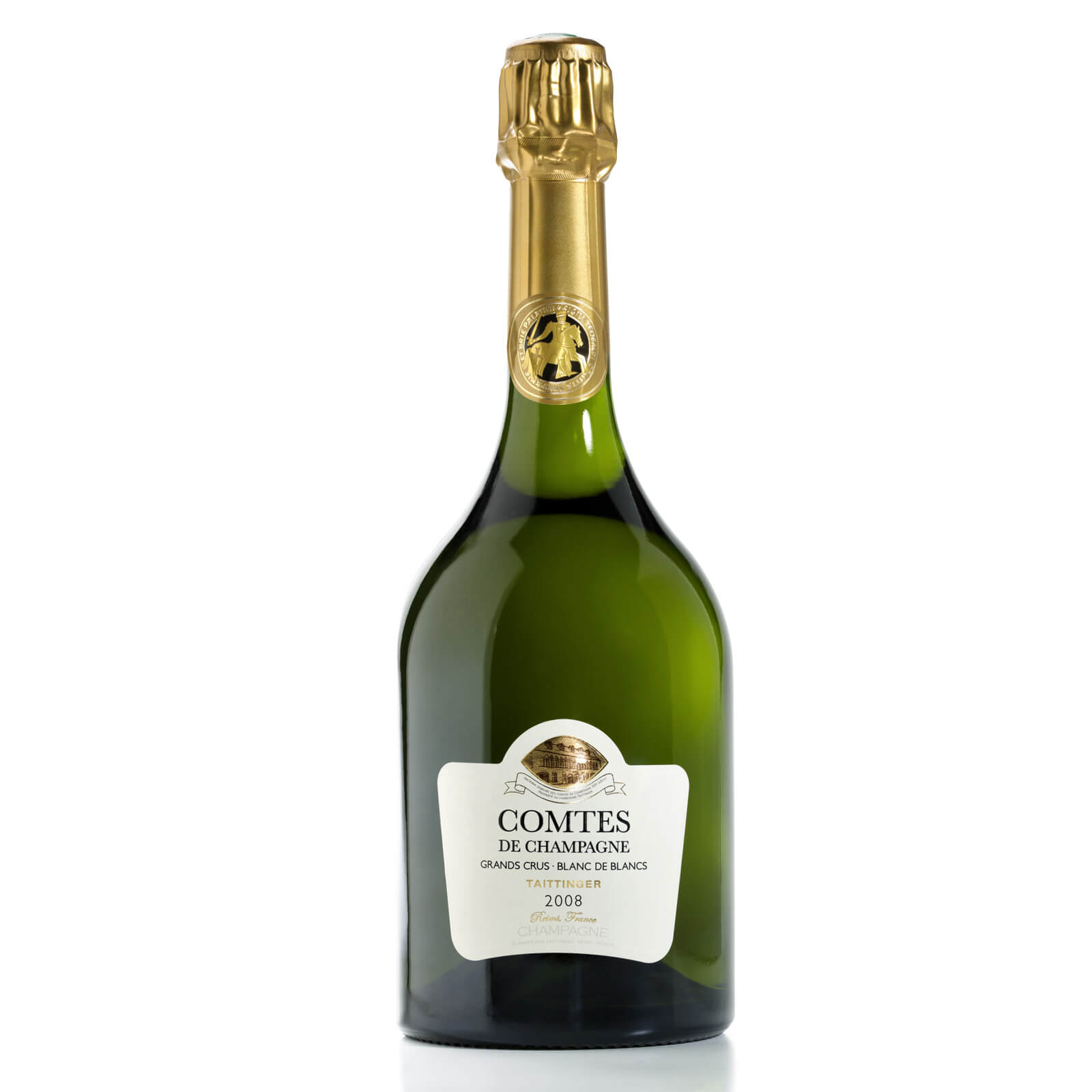
Taittinger Comtes de Champagne Blanc des Blancs 2008
Taittinger Comtes de Champagne Blanc des Blancs 2008 tasting notes
Comtes de Champagne is undoubtedly a champagne that benefits from further time in the cellar, and this especially applies to the 2008. So much so that I found it distressingly difficult to bring myself to open the bottle. It felt a tiny bit like I was removing a little of the joy from the world. I got over that surprisingly quickly as if I didn’t then someone else would.
For me, a truly stunning wine, a great champagne. Those calling it the greatest Comtes of all will get no argument from me, though the 1990 and 1996 were pretty spectacular. As were ’00 and ’02. But I am not sure any of these managed to climb to these heights.
The color is an appealing limpid yellow green. The nose explodes with flavors: stone fruits, hazelnuts, marzipan, limes, peaches, cashews, and floral notes. A hint of that magic chalk? Mouthfilling flavors on the palate with a gloriously creamy texture. The balance is perfect, and the structure is backed by crisp, green apple acidity.
There are early hints of the complexity to come. The wine has serious intensity and yet walks the tightrope of finesse, elegance, and delicacy. Slight hints of warm toast toward the finish. The finish is as long as I can recall on a champagne for a very long time.
Well-cellared, this has 20 years or more ahead of it. I’d give it 99, only because I know that there is more to come. A truly monumental champagne. Sell your children if necessary, but make certain you have some of this astonishing wine in your cellar.
For more information, please visit www.taittinger.com/en/comtes-de-champagne
You may also enjoy:
Louis Roederer Cristal 2008: Supreme Elegance And Ethereal Grace
Bollinger 2008 La Grande Année Champagne: Still Young, But Already A Classic
Dom Pérignon 2008: From The Monk’s Earliest Beginnings To The Most Glorious Champagne Vintage
Leave a Reply
Want to join the discussion?Feel free to contribute!



Lovely to read that my money has been well spent although there really never was a doubt.